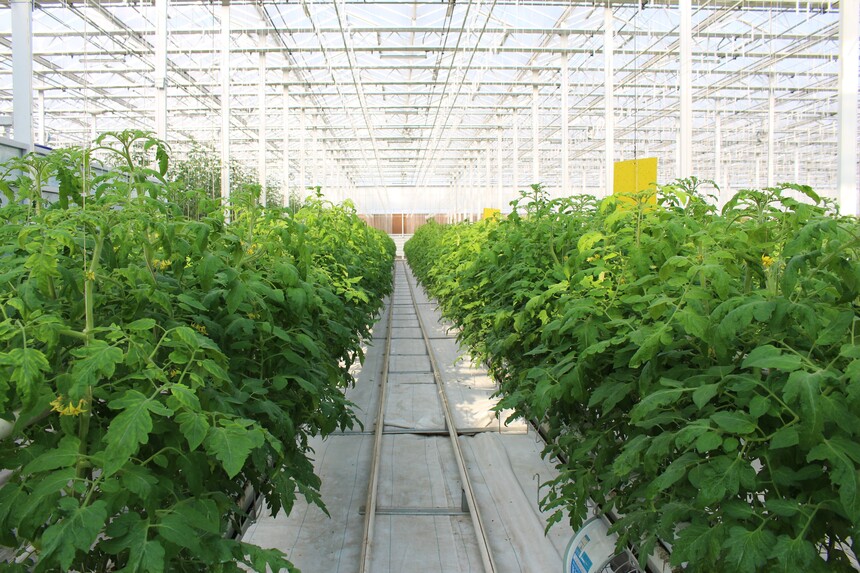|
How should farming cope with La Nina Effect?The "La Nina effect", also known as the "anti-El Nino phenomenon", is mainly affected by the sea surface water temperature (rise or fall) and thus affects the specific performance of our climate. There are three main manifestations. The first is the temperature, in the winter of La Nina years, the temperature is significantly lower (more than 2 degrees Celsius); The second is the scope, the scope of influence is relatively broad, which can cover most of the scope of our country, especially the central and eastern areas. The third is precipitation. What is prominent in La Nina years is the concentrated precipitation. The influence of low temperature and cold air combined with the concentrated precipitation will cause natural disasters such as freezing rain, blizzard and heavy blizzard.
La Nina freezes not only people, but also plants! When La Nina appears, our country is prone to "winter cold and summer heat", "north waterlogging and south drought", and lots of tropical cyclones. It is more damaging to crop growth because of its long duration. Both food and cash crops can be reduced by abnormal weather during La Nina, but the degree of damage varies greatly depending on the nature of the crop. According to our past records, during the La Nina phenomenon, rice, wheat, corn and other food crops have been severely reduced. La Nina phenomenon will lead to low temperature in winter and spring, frequent cold freezing disasters, affecting winter wheat overwintering. It will also lead to more precipitation and typhoons, which will increase the flood disaster in summer and affect the rice planting in the south. In addition to the above crops, vegetables have a high requirement for temperature. Low temperature freezing damage in winter may lead to reduced vegetable production and affect transportation. The "La Nina effect" has a great impact, such as transportation, electricity, etc., and the biggest impact is on agricultural planting. Today, I will focus on summarizing what we should pay attention to in agricultural planting under the "La Nina effect". How should farming cope with La Nina Effect? In view of the snowfall under the influence of La Nina effect, it is necessary to pay attention to snowfall, especially in greenhouses and vegetable areas. Failure to take preventive measures will lead to great losses, and the recovery period after disaster is long, so it is very necessary to take preventive measures in advance. In case of heavy snow, it is necessary to timely heat up the shed, reinforce the greenhouses and remove rain and snow to reduce the direct losses.
1. Anti-freezing and warm Close the greenhouses and cover them with grass mat or other coverings. In order to prevent rain and snow from wetting the grass mat, cover them with a thin film. Where conditions permit, multi-layer coverage should be adopted, and plastic sheds or small sheds should be built in the shed. In snowy weather, the snow on the greenhouse should be cleared in time to prevent the heavy snow from collapsing the greenhouse. 2. Timely cover and collect Vegetables with weak cold resistance, such as Chinese cabbage, should be tightly tied to the waist and anti-freezing measures should be taken. Sun shade nets can also be used to cover the floating surface of heat preservation, and vegetables that may be frozen should be promptly collected, stored indoors and marketed in batches. 3, timely soil cultivation, reasonable topdressing At the end of cold weather, loose soil should be cultivated in time to improve soil temperature and protect roots. If possible, it is feasible to scatter a thin layer of rice husk ash and plant ash. At the same time, nitrogen fertilizer should be controlled, and the amount of nitrogen fertilizer should be reduced appropriately in the seedling stage, and the application of nitrogen fertilizer should be avoided in order to improve the resistance. Besides, attention should be paid to foliar fertilization. After clearing up, vegetables can be sprayed with 0.2% potassium dihydrogen phosphate solution 1-2 times to enhance the frost resistance. 4. Use the lamp to increase the light and temperature The solanum and melon seedlings cultivated in the greenhouses should be well insulated from the cold and keep warm. Under the condition of extremely low temperature, lamps can be added to enhance light and temperature to promote growth. Low temperature seedbed to control watering, so that the nutrient soil is not white do not water. Conditional use of electric heating wire heating facilities, and timely build a small arch shed, covered with non-woven fabric. To be sown melons and vegetables seedlings, should avoid cold injury, by increasing the ground temperature and other measures after sowing.
5, prevent air moisture When the temperature drop is relatively large, the humidity in the shed will continue to rise, if not treated in time, it will lead to the occurrence of various diseases and pests, so it is necessary to do a good job of daily ventilation, mainly to disperse the too-humid air in the shed. Although the La Nina effect can bring a strong cooling, as long as people take adequate precautions, they can minimize the losses and even survive the winter without being affected by the weather and have a good harvest. |






